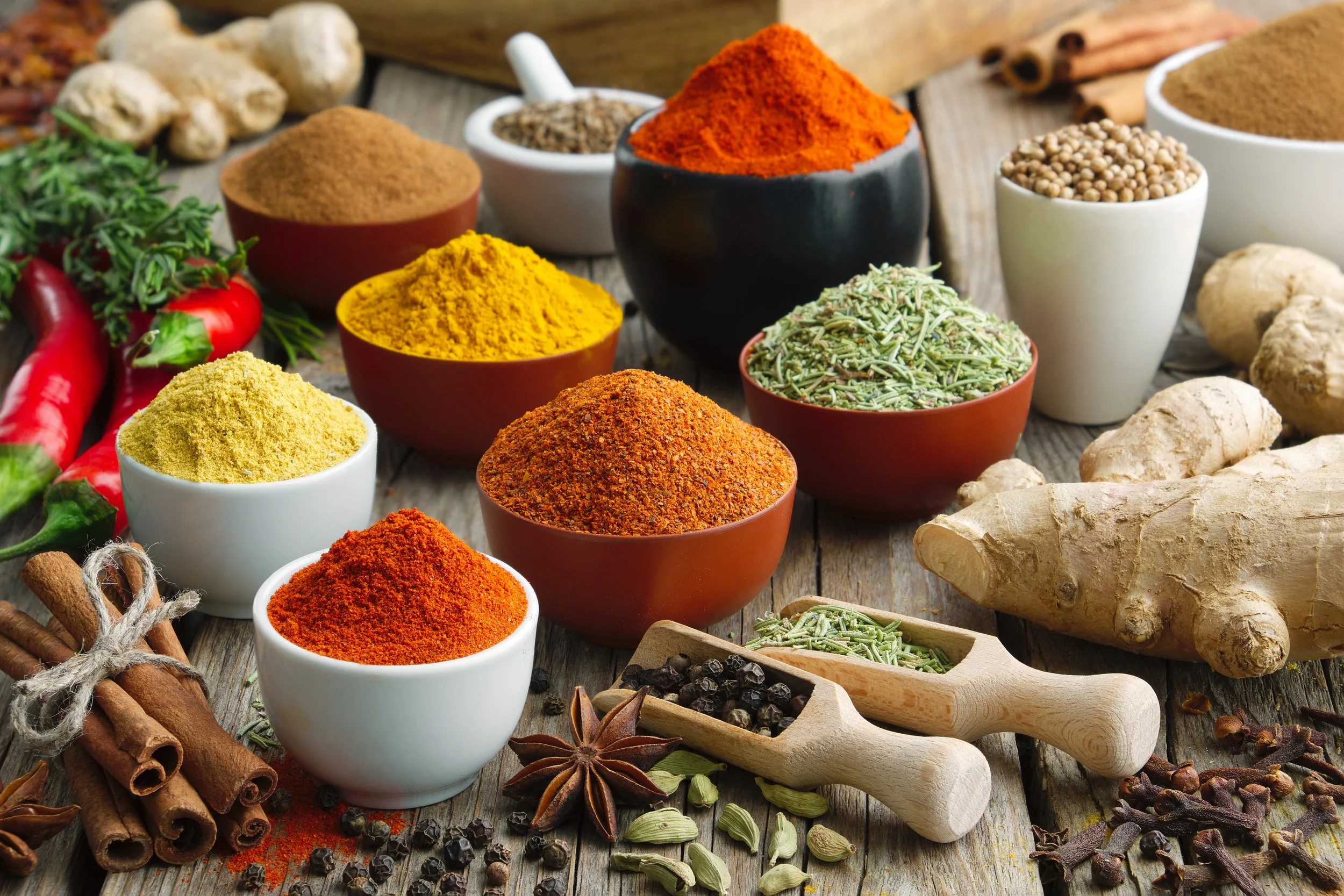Spice Up Your Diet: Anti-Inflammatory Herbs & Spices
Spice Up Your Diet: Anti-Inflammatory Herbs & Spices
Magazines, blogs, and well-meaning family members often tell us to “just eat better!” But eating better doesn’t have to mean boring, bland, or chewing on kale in tearful silence. The anti-inflammatory diet is packed with powerful foods like leafy greens, fatty fish, and nuts—but the real secret weapon? Flavorful herbs and spices.
Your spice rack might be doing more than flavoring your food—it could be helping your body fight inflammation from the inside out.
A (Very) Brief Science Moment
Herbs and spices are full of phytochemicals—natural compounds that aren’t essential nutrients like vitamins or minerals, but still help protect your cells from damage with their antioxidant properties. Think of them as the plant’s immune system, and lucky for us, they work on humans too. Some of the heavy-hitting phytochemicals include:
Curcumin (found in turmeric—not cumin, confusing, I know)
Allicin (from garlic)
Piperine (black pepper’s secret weapon)
Rosmarinic acid, apigenin, ursolic acid, and more
Top Anti-Inflammatory Flavor Boosters
Here are a few favorites that deserve a permanent spot in your kitchen:
Turmeric – Great in curries, golden milk, and even teas. Just remember: curcumin needs black pepper (piperine!) to be absorbed to its full potential.
Ginger – Add to tea, smoothies, baked goods, or stir-fry for a warm, spicy kick. Gingerbread house anyone?
Garlic – Raw, roasted, powdered — just use it. It's delicious on just about everything and full of allicin.
Cayenne Pepper – A metabolism-boosting, inflammation-busting firecracker for your favorite heat-seeker.
Black Pepper – More than just table seasoning. Piperine helps boost absorption of other nutrients and compounds. Add it to salads and pastas, or get innovative and add it to sweet treats.
Don’t Forget Oils & Vinegars
Anti-inflammatory eating doesn’t mean skipping fats — just choose the right ones:
Olive oil – The gold standard.
Avocado oil – Great for high-heat cooking.
Sesame oil – Toasty and packed with antioxidants.
Walnut oil – Nutty and rich in omega-3s.
Vinegars – Especially dark varieties (like balsamic), which are less processed and contain more antioxidants. Mix your favorite vinegar, oil, and spices for a tasty anti-inflammatory salad dressing!
Bottom Line: Eat Better, But Make It Fun
No one’s asking you to eat cardboard. The anti-inflammatory diet can (and should) be flavorful, fun, and full of color. Herbs, spices, and healthy oils bring life to your plate and help your body fight inflammation at the same time. So next time someone tells you to “just eat better,” tell them you are — with a kitchen full of spices and herbs that not only taste great, but also help and heal your body!

